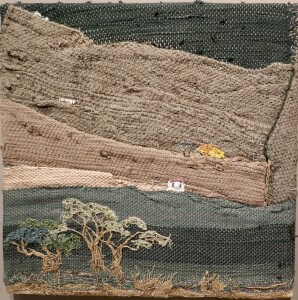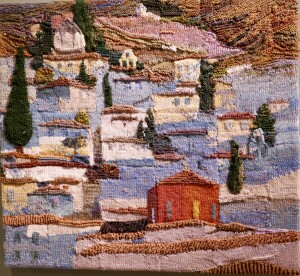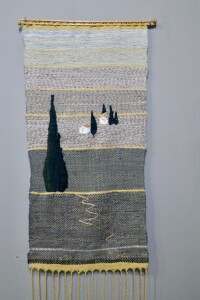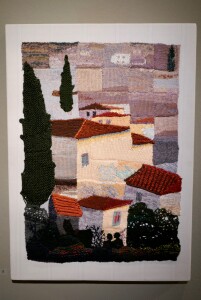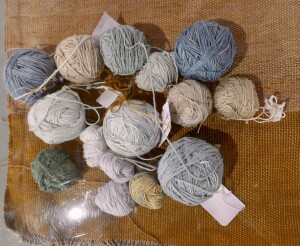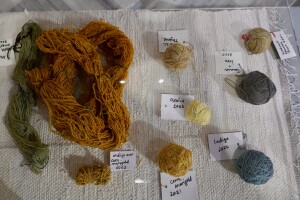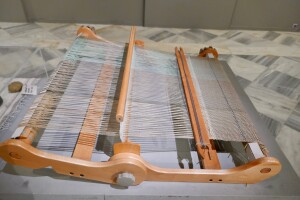Â
Â
- An appreciation, by Ingrid Lehmann and Jamie Arbuckle, for Peacehawks
Â
 INTRODUCTION
Â
Since the inception of Peacehawks in January of 2010, we have posted 41 articles, essays and reviews, all on the subject of the enforcement of international peace and security.  Recent events: the pandemic, war in Ukraine, Jamie’s 80th –  have summoned us to an accounting. Our balance is showing us that we have written not about peace and security, but rather too frequently have we been concerned with the exceptions which prove the misrule: unrest and insecurity. Traffic and parking regulations are enforceable and are usually enforced world-wide, while genocide is not preventable and is rarely punished – world-wide. A permanent member of the United Nations Security Council is rampaging over the rubble it has created in a neighboring country; their head of government has been indicted for war crimes. As seemingly powerless as the international community is to deal with interstate conflict, it is no better able to manage intrastate conflict, witness the more or less constant uproar in Sudan, as protracted and murderous as it is pointless – and to us, so far, unmanageable.
Â
As the late Amitai Etzioni, the founder of Communitarianism, wrote:
Â
… despite my confidence that the message I have hammered out would do the world a lot of good—no one seems to be listening.[1]
Â
We think it time we wrote about something completely different – what about peace?
Â
And, thinking thus, we encountered the art of Mary Gladstone.
Â
MARY’S PLEKTURES OF HYDRA
Â
I (Jamie) have often, at concerts or exhibitions, been aware that I was, in contrast to some of my friends, missing something. The music I heard, the art I saw, was not for me the comprehensive, elevating experience it seemed to be for others. Often, I experienced little, neither emotional nor tactile. There were exceptional occasions, but they were just that – exceptions.
Â
So when, on 8 May we entered Mary’s showing of her works, “Perspectives on Hydraâ€, in the Museum of Hydra, it was a world we walked into. A world well known to us and much loved, but here suddenly more deeply real to us, and as completely physical – as sensible - as it could be. Mary’s “Perspectives†have light and color, they have depth and texture. They seemed to us to have scent, faint as a breeze, but particulate, so we thought we breathed the island: the herbs, the spices, the groves, jasmine, donkeys, goats, the sea- all wafted through that room, which was suddenly no room at all – it was a world, alive and tactile. And we did not just view these works, we experienced them. The room we stood in fell away; we stood there in soft open shade, as in an olive grove.
Â
We’ll try to show you now.
Â
THE PLEKTURES
Â
Ragged Hillside
Â
The word Plekture has been invented by Roger Green, a poet of Hydra: it combines the Greek word for knitting with the word picture, and there is indeed a real need for a word to denote these of Mary’s works, these woven and knitted reliefs. We think Roger’s nailed it.
Â
Ragged caught our eyes as soon as we came into the exhibition room. There was for us a sense of immediacy – this was real, and we were there. The scene is at once restful, yet deeply evocative – we had stood here before; we were at that moment in that scene, looking up from a stony track at that commanding horizon, perhaps just beyond Vlychos?
Â
Mary has written of Ragged:
Â
I really enjoyed making (Ragged) because it was a carefree process compared to many other pictures. Â It is based on a recollection of a walk in autumn with a view of bright orange leaves against the dark green ground.
Â
Â
The background of the scene is woven, and those colors set the tone for the work. In Ragged, the colors are earthen, subtle but nonetheless expressive, and shade naturally into each other. The details of the middle and foreground, knitted onto that background, repeat those tones but with the varying textures of a relief. We would like to dress in those colors for the rest of our lives. We would like to spend the rest of our lives walking up to those huts. Imagine the lives lived there.
Â
Â
Haven (description by Ingrid)
Â
Â
This pleckture gave us the most personal view of Hydra, the houses and walls shaded in white and light blue, the few trees and, most importantly, the two churches. The red church was a prominent marker for us to find our way home in August 1997 when we rented a house high up on that hill. The knittings give a depth, that (shallow but real) third dimension lending immediacy and reality to the scene. Serenity prevails.
Â
The Path
Â
Â
As we moved through  the exhibition we were seized by this hanging. Its simplicity, its natural elegance: it is instantly evocative and real – we were really there, on that path. We could feel it in our knees and legs – that trail is steep and rough, and it is a borderline country for the elders, but we are delighted that that path, which we have taken so often, is still there – and so are we.
Â
 Painters’ Hour
Â
Â
Â
Â
 The Painters’ Hour refers to that last hour of the day, between the sun sloping down onto the horizon, and the coming of darkness.
Â
We are here facing inland towards the spine of the island; the sun is setting behind the hills on the mainland, which lie just over our right shoulder. The crest line we face is, just above our view here, mostly bare rock, and those rocks are just starting to reflect the sunset behind us. The light here before us is of a faint rose tint, which will deepen towards darkness. It is a scene of contrasts, sharp now but soon to dull, as shadows will expand and spread, and night will fall.Â
Â
But now, for these moments, this rare and subtle light lends to the scene the contrasts we have missed in the burning day. Behind us in the harbor, in fact just over our left shoulder, the evening is going down to dusk, the tourists have reboarded and sailed away. The sea front exhales gently, siestas are ending, but it is too early for dinner –
Â
It is the Painters’ Hour.
Â
Â
THE MEANS TO THE ENDS – THE DYING, THE WEAVING AND THE KNITTING
Â
As the Website Art of Greece describes the works:
… the nature and beauty of her (Mary’s) colors, and her experienced artistic eye investigates each time and mixes these colors, alternating and matching perfectly aesthetically the dark browns with the greys, ochres, yellows, oranges, blues, pomegranates, and reds, creating with her own seal a globally exciting language of visual works on braided or woven substrates of particular touch, color, and shape.[2]
Â
Â
And Mary writes:
First came the knitting. I learnt to knit in childhood. At that time most women knitted and knitting was part of the timetable at the school I attended. My mother and aunts knitted, my grandmother crocheted, one aunt did tatting; there was nothing unusual or exceptional in practising these skills. What is unusual in my pictures is that I follow my own pattern, sometimes spontaneously at other times working out beforehand exactly which stitches and how many to use. The first fabric pictures I made were entirely knitted in squares, like patchwork blankets, each square being part of the larger picture. The composition was based on drawings and watercolours made over many years. Sometimes I knit individual pieces such as trees, houses or people and sew them into the picture, appliqué style.
 From knitting I progressed to weaving fabric for my pictures. As well as learning to knit at school I was fortunate to learn to weave on large treadle looms. Now I use a very simple table loom, maximum width fifty centimetres, on which I create backgrounds. Mostly I use cotton yarn but sometimes I create cloth with the technique used in Greece and elsewhere for making rag rugs. Old material is cut into long narrow strips which are used, just like yarn, to weave across the warp. The texture is rougher and more accentuated than with thread.  Sometimes I cut pieces from the fabric, sometimes I use it whole as it is off the loom. For other pictures I crumple the material into folds to form hills and valleys.
 Recently I have been learning to dye cotton yarn with plants I gather on the island and further afield. The shades produced are very harmonious and of course reflect the colours of the hills from which they came. The palette is limited and this creates a unity to the pictures. As my work becomes more random I feel that the use of colour to integrate it is more and more important.
 CONCLUSIONS
Â
William Wordsworth said that, when he could no longer stand an English winter, he would go into his garden, eat olives, and think about Italy.
Â
We can imagine, some murky mid-winter day, when we cannot see across our lake to our mountains, which have recently had little or no snow on them anyway, we will sit with Mary’s Plektures – and think about packing.
Â
Â
Â
Â
[1]  Etzioni, Amitai, „My Kingdom for a Wave,†The American Scholar, pub Phi Beta Kappa, Winter 2014. Accessed 02.06.2023.
[2] https://daysofart.gr/en/news/beyond-the-city/exhibition-of-woven-works-by-mary-gladstone-views-of-hydra-at-the-historical-archive-museum-of-hydra-until-may-25/accessed 17.06.23

